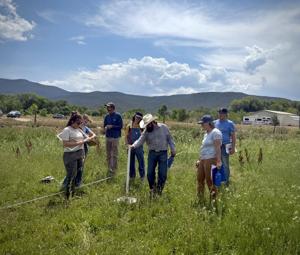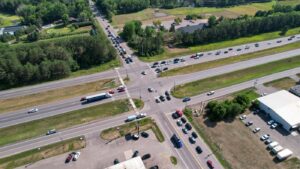
A small town in New Mexico has been chosen as one of only two locations in the United States to participate in a significant citizen science project aimed at advancing regenerative agriculture. Taos, alongside a community in northeastern Ohio, will host the Ecdysis Foundation’s “Project Avalanche,” which focuses on empowering farmers and ranchers through direct involvement in agricultural research.
Gillian Joyce, executive director of Alianza Agri-Cultura de Taos, recalled that Earth Day 2020 was a pivotal moment for the community. Despite the cold weather and the challenges posed by the pandemic, approximately 50 individuals gathered for an outdoor screening of the documentary Kiss the Ground. This film, which emphasizes the importance of soil health and features Ray Archuleta, a local agricultural expert, helped ignite a collaborative movement among various groups dedicated to agricultural education.
Over the past five years, Taos has witnessed a remarkable shift towards regenerative farming practices, which aim to restore and enhance soil health while increasing biodiversity. This new initiative builds on the foundation laid by the Thousand Farms Initiative, which has conducted research on around 1,600 farms across more than 30 states and two Canadian provinces. The Ecdysis Foundation, founded by former U.S. Department of Agriculture employee John Lundgren, is now ready to provide the tools and framework for farmers to directly participate in this research.
According to Lundgren, the selection of Taos and Ohio was due to their existing commitment to regenerative practices and the presence of a strong network of interested farmers. “The world is just changing around us really fast,” he noted. “There’s farmers that are figuring out how to adapt … so we’re trying to identify what seems to be working, and what doesn’t.”
Project Avalanche is designed to be accessible, with a cost of $7,500 per farm covered by the Ecdysis Foundation. For participating farmers, the program remains free of charge, a commitment Lundgren emphasized in an email. In August, Lundgren and his team conducted a training session in Taos where local farmers learned how to sample soil for various metrics, including temperature, density, and water infiltration rates, as well as how to assess local wildlife diversity.
Joyce pointed out that this initiative has equipped the community with essential tools for monitoring agricultural health. “Our community now owns all of those tools,” she stated. “Ecdysis didn’t just loan us all of the equipment; they gave us that equipment.”
One local participant, Robert Martinez Sr., operates a grass-fed cattle farm in Taos. He expressed enthusiasm about using the newly acquired equipment to gather data on his property. “If you’re thinking about the initial days of school, this is the test to kind of assess where you are,” Martinez said. He noted that while he has previously conducted soil tests, the follow-through had often been lacking. Now, with Project Avalanche, he aims to improve soil health and productivity.
Historically, Taos has resisted large-scale industrial farming due to its short growing seasons. However, Martinez believes that the rising demand for organic foods could provide opportunities for smaller producers. “Over time, it became harder and harder to do it for a living,” he reflected. “Those of us that are continuing, we’re trying to do a better job. We’re trying to improve our soils. We’re trying to improve our livestock and our practices.”
Lundgren, who left his role at the USDA to pursue practical agriculture, believes that regenerative farming is a critical tool in the fight against climate change. He pointed out that regenerative almond farmers have successfully reduced their water usage by 50%, highlighting the potential benefits of these practices. He stated, “If we were to convert our rangelands to regenerative production practices, they would offset five years’ worth of annual emissions.”
The Ecdysis Foundation’s lab manager, Kristianna Gehant Siddens, who has spent two decades farming in South Dakota, echoes this sentiment. She emphasizes that adopting regenerative methods often requires a significant mindset shift among farmers. “It takes a strong sense of self and purpose,” she said. “We need to put our land, our water, to use in this valley.”
While the last few years have been challenging due to drought conditions, Martinez views this initiative as the first step towards a more sustainable agricultural future. He acknowledged the steep learning curve ahead but remains optimistic about the journey. “I know I’ve got a whole lot to learn,” he concluded, reflecting the commitment of the Taos community to embrace regenerative practices and shape the future of agriculture.







